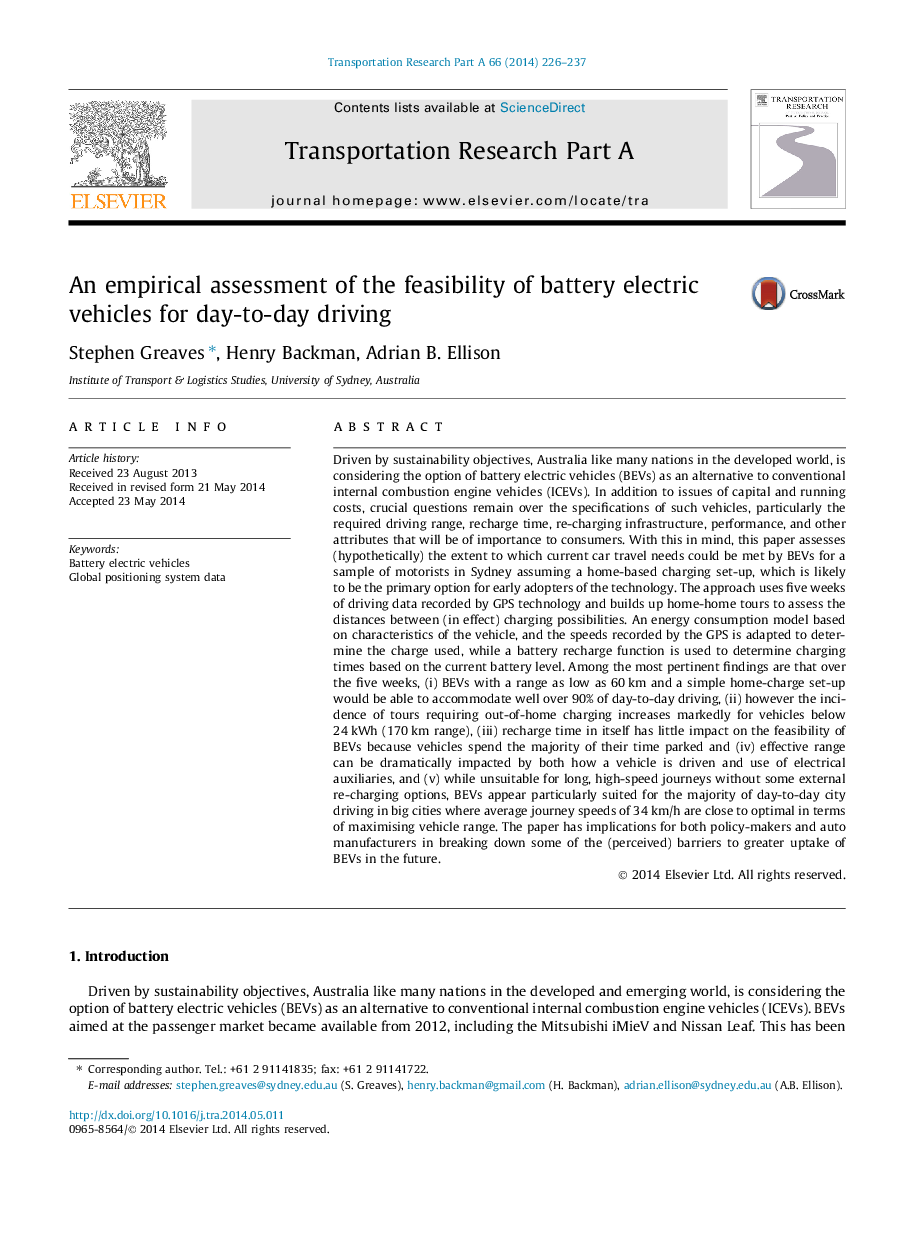| کد مقاله | کد نشریه | سال انتشار | مقاله انگلیسی | نسخه تمام متن |
|---|---|---|---|---|
| 6781739 | 533610 | 2014 | 12 صفحه PDF | دانلود رایگان |
عنوان انگلیسی مقاله ISI
An empirical assessment of the feasibility of battery electric vehicles for day-to-day driving
ترجمه فارسی عنوان
ارزیابی تجربی از امکان سنجی وسایل نقلیه الکتریکی باتری برای رانندگی روز به روز
دانلود مقاله + سفارش ترجمه
دانلود مقاله ISI انگلیسی
رایگان برای ایرانیان
کلمات کلیدی
وسایل الکتریکی باتری، داده های سیستم موقعیت یابی جهانی،
موضوعات مرتبط
مهندسی و علوم پایه
سایر رشته های مهندسی
مهندسی عمران و سازه
چکیده انگلیسی
Driven by sustainability objectives, Australia like many nations in the developed world, is considering the option of battery electric vehicles (BEVs) as an alternative to conventional internal combustion engine vehicles (ICEVs). In addition to issues of capital and running costs, crucial questions remain over the specifications of such vehicles, particularly the required driving range, recharge time, re-charging infrastructure, performance, and other attributes that will be of importance to consumers. With this in mind, this paper assesses (hypothetically) the extent to which current car travel needs could be met by BEVs for a sample of motorists in Sydney assuming a home-based charging set-up, which is likely to be the primary option for early adopters of the technology. The approach uses five weeks of driving data recorded by GPS technology and builds up home-home tours to assess the distances between (in effect) charging possibilities. An energy consumption model based on characteristics of the vehicle, and the speeds recorded by the GPS is adapted to determine the charge used, while a battery recharge function is used to determine charging times based on the current battery level. Among the most pertinent findings are that over the five weeks, (i) BEVs with a range as low as 60Â km and a simple home-charge set-up would be able to accommodate well over 90% of day-to-day driving, (ii) however the incidence of tours requiring out-of-home charging increases markedly for vehicles below 24Â kWh (170Â km range), (iii) recharge time in itself has little impact on the feasibility of BEVs because vehicles spend the majority of their time parked and (iv) effective range can be dramatically impacted by both how a vehicle is driven and use of electrical auxiliaries, and (v) while unsuitable for long, high-speed journeys without some external re-charging options, BEVs appear particularly suited for the majority of day-to-day city driving in big cities where average journey speeds of 34Â km/h are close to optimal in terms of maximising vehicle range. The paper has implications for both policy-makers and auto manufacturers in breaking down some of the (perceived) barriers to greater uptake of BEVs in the future.
ناشر
Database: Elsevier - ScienceDirect (ساینس دایرکت)
Journal: Transportation Research Part A: Policy and Practice - Volume 66, August 2014, Pages 226-237
Journal: Transportation Research Part A: Policy and Practice - Volume 66, August 2014, Pages 226-237
نویسندگان
Stephen Greaves, Henry Backman, Adrian B. Ellison,
